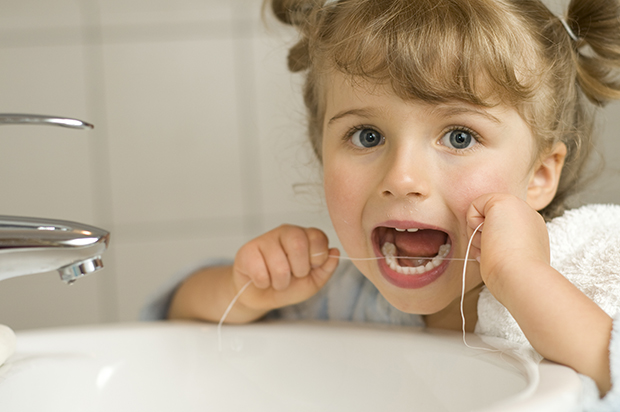
Submitted by Thomas Hall, D.M.D and Sara Rauen Dardis, D.D.S, Pediatric Smiles of Bloomington
Most people have heard of gingivitis — thanks to the Listerine commercials that say their mouthwash will prevent it — but many people have no idea what this ominous-sounding word actually means. Furthermore, there is the perception that gingivitis is an adult problem, when in truth, it is quite common among children and teens.
So, just what is gingivitis? Quite simply it is inflammation of the gums that surround and support the teeth. Gingivitis is the earliest stage of gum disease. It is usually easily corrected with diligent oral hygiene practices such as brushing and flossing. However, if gingivitis is not diagnosed and treated, it can progress to a more serious form of periodontal disease that requires more extensive treatment, and may cause pain, loose teeth, and even loss of teeth!
Gingivitis is caused by not taking proper care of teeth. Everyone’s mouth is full of bacteria. When bacteria stay on the teeth long enough, it forms a film called plaque. If plaque isn’t removed by good daily dental care, it will harden into tartar which requires removal by a dentist or hygienist. Once tartar forms, it can infect the tissue surrounding the teeth and start to destroy gum tissue, causing gums to bleed and pull away from the teeth. This condition is called periodontitis.
There are five clear warning signs of gingivitis in kids:
- Gums that bleed when brushing
- Gums that are bright red
- Gums that are swollen and tender
- Bad breath
- Gums that have pulled away from the teeth
Parents can help their children prevent gingivitis and gum disease by having twice yearly dental cleanings, and by making sure that everyone follows these basic oral hygiene guidelines.
- Brush twice a day for at least two minutes with a soft-bristled brush. Young children should be supervised and given help as needed — no matter how much they insist they can “do it themselves!”
- Floss every day, especially when teeth are in close contact, to remove the bacteria that cause gum disease. Young children who do not have the manual dexterity to properly floss may find that floss picks or other types of flossers are easier to use. In addition, have floss products in several rooms of the home, not just in the bathroom.
- Replace toothbrushes every three to four months. Frayed bristles can damage gum tissue.
- Avoid snacking on sugary drinks and foods as sugar causes plaque-causing bacteria to multiply quickly. We know this can be a hard one with busy families on the go. Need suggestions? Read our article, “Top 5 Snacks for Families on the Go” in the January issue of Healthy Cells Magazine.
Gingivitis can be reversed by practicing good oral hygiene and having regular professional cleanings. Like cavities and other dental problems, kids can have gingivitis and not realize it. It doesn’t always cause pain or irritation, but will stealthily do damage to the teeth. That’s why it is imperative to visit your dentist twice a year so they can spot small, easily treatable problems before they turn into more serious issues.
Pediatric Smiles of Bloomington is a specialized dental office for children 0 to 18 and special-needs patients. They are located at 1112 Trinity Ln. in Bloomington and may be reached at 309-663-7339. Ask about their “No-Cavity Club” and the rewards kids may earn.

